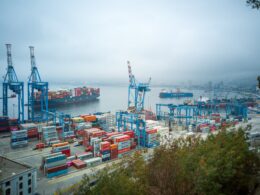In March 2016, the Chinese government plans to formalize its adoption of the recent “Two Child Policy” when it meets for its annual parliament session. Until then, the one-child policy remains in effect so that all eligible couples have the same opportunity at the same time; couples currently pregnant with a second child are still subject to fines. Approximately 90 million Chinese families may qualify to add a child under the new policy, and the extra numbers would swell the total Chinese population to as many as 1.45 billion by the year 2030.
The impact of the One-Child policy on Chinese culture and its families has been immense, and the shift way from it is intended to soften and reduce that impact. The shift will also impact China’s economy and especially its manufacturing sector. It will certainly test current employment practices standards for employers and their soon-to-be pregnant employees.
A Tale of Two Policies:
In the late 1970’s, China was launching itself out of the feudal/communist political amalgamation under which it had lived for the first three-quarters of the 20th century. The 1979 One-Child policy was intended to contain an imminent and out-of-control explosion of population growth. Feeding the vast numbers of an ever increasing mass of humanity was a challenge, especially considering the country’s then agricultural and agrarian-based economy. That same year, the country also took its first step into the global marketplace by opening up its first “Special Economic Zone” in Guangdong province. Set far away from Beijing, the Zone’s location kept the capitalist activity far from the socialist seat of government and opened global trade through the Pearl River Delta. The future impact each of the two policies couldn’t be more different.
Economic Zones Flourish:
The Special Economic Zones have been extremely successful. Guangdong province alone is one of the world’s leading manufacturing hubs, having the country’s fourth largest GDP. In 2014, that number was estimated at US $1.1 trillion, almost 10% of the national GDP. Other zones have been developed across the country, all of which have contributed to the immense growth of China’s industrial economy. Feeding its people is no longer a concern.
One-Child Policy Creates Unforeseen Challenges:
The One-Child policy, however, has not had a similar positive effect.
One Child = Huge Pressure:
Some commentators have identified the two generations of single children as “little Emperors” because of the amount of attention and resource poured into them by their parents. And while it is true that each of these “only’s” has received an inordinate amount of bounty, they are also expected to fulfill the obligations previously shared among a group of siblings. Before, each child in a family group had a role to play, and all shared in the responsibility of caring for their aging parents. Today’s single child must fulfill all those roles single-handedly, and many have become the sole support for their aging parents.
Old-Age Dependency:
The earlier generations are also significantly affected by the One-Child policy. These days, many only-children are responsible for caring for their aging grandparents as well as their parents. Identified as the “inversion of the age pyramid,” there are now many more seniors in China moving into retirement age than there are young people to support them. Statistics indicate that the working age population of China will shrink by 100,000,000 people by the year 2035. That means a significantly smaller national workforce, and increased pressure on the then-working class to support those older retirees. The number of Chinese citizens over 65 years old is growing at a four percent per year rate, the fastest graying of a national population in world history. And, tragically, the country has developed very few public social systems to provide for those seniors who will have no family to support them.
Gender Imbalances:
Whether by “selection” or other methods, a large percentage of China’s one-child families have had sons, not daughters. Traditionally, the Chinese have prioritized their sons as the future of their family (girls were married off and supported their husband’s family). Consequently, there are now an estimated 30 million young men for whom there are no available potential wives. It’s an astonishing fact to consider – if every available woman between 18 and 35 years old were to marry today, there would be no other Chinese women available for 30 million potential husbands. The future of those men’s families has just come to a quiet and lonely halt.
The Manufacturing Sector Will Feel the Impact Throughout the Transition From One- to Two-Child Families:
Having been an employer in China, I am familiar with the laws regarding maternity leave. Like many other countries, China’s laws require employers to provide a certain period of time off to have the baby and care for it in its early months. Women are allowed as much as six and a half months off – unpaid – for maternity leave. After returning to work, women are permitted breastfeeding opportunities to feed their infant, which may also include travel time to and from the baby’s location. New parents of second children will have to consider the cost to the family of a reduced income at a time of higher financial demand. For employers, adding an additional aspect of maternity leave for female employees and the accompanying labour interruption that will follow will also create a challenge.
Like many other enterprises that are engaged in Chinese manufacturing hubs, I, too, have my sights on the coming changes to China’s workforce. To maintain productivity throughout the transition, it will be critical for every corporation doing business in China today to understand how those changes will impact their supply chains and contracts. Ensuring future productivity may require modification of existing practices.
For some further reading suggestions:
https://vantagecompliance.com/red-flag-reducing-risks-in-your-china-supply-chain/
http://www.huffingtonpost.com/entry/china-two-child-policy_56371cb9e4b063179912d269
http://www.forbes.com/sites/alexberezow/2014/03/25/chinas-disastrous-one-child-policy/
http://www.newsweek.com/2015/06/05/gender-imbalance-china-one-child-law-backfired-men-336435.html













